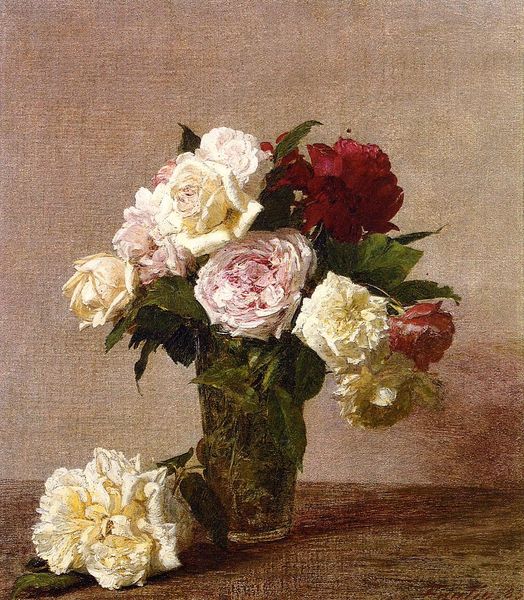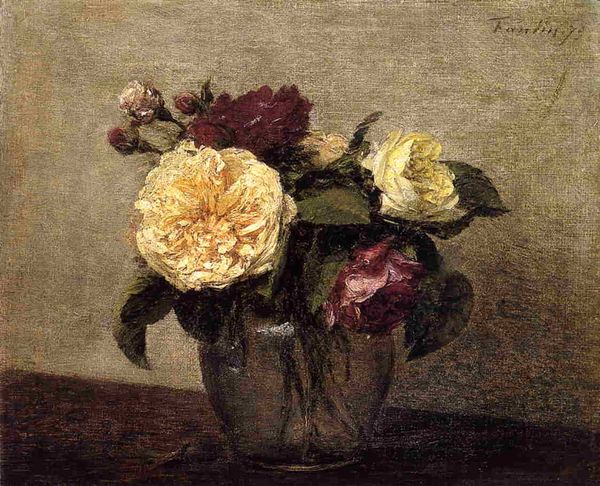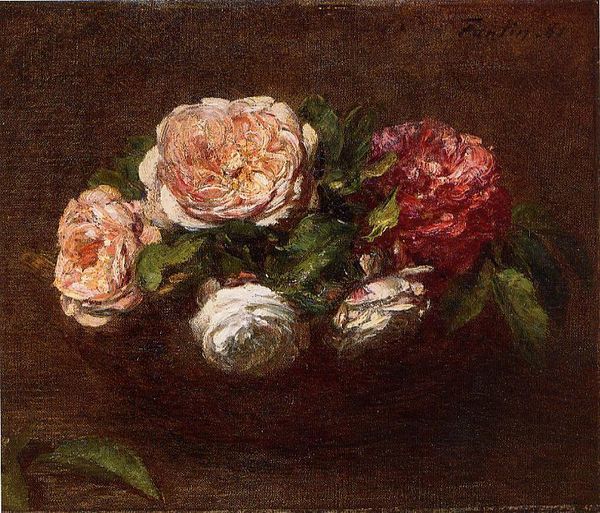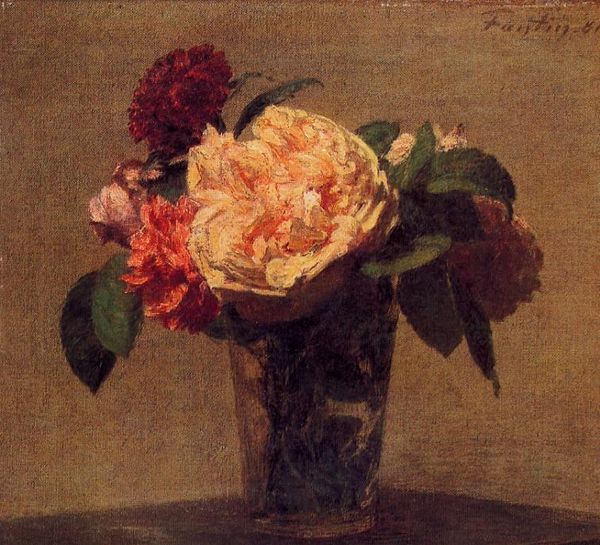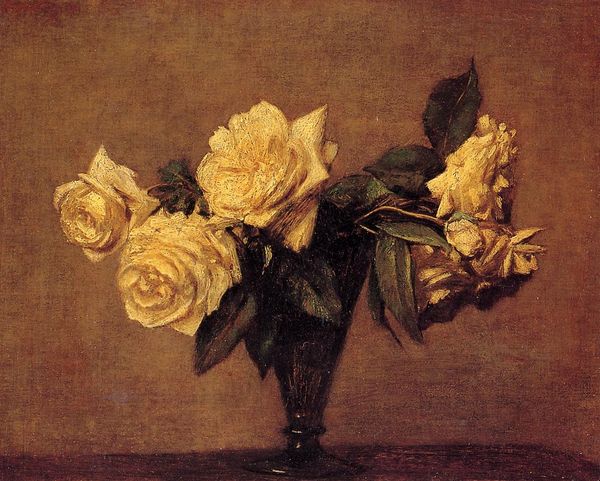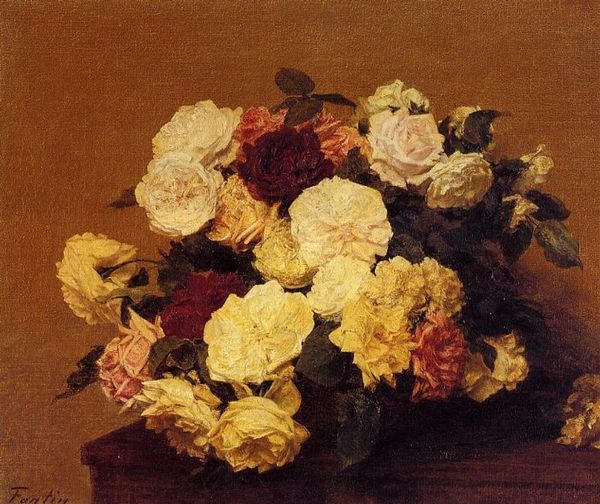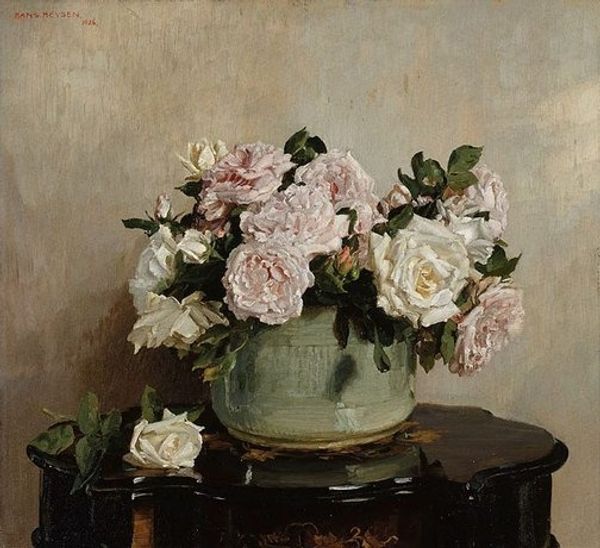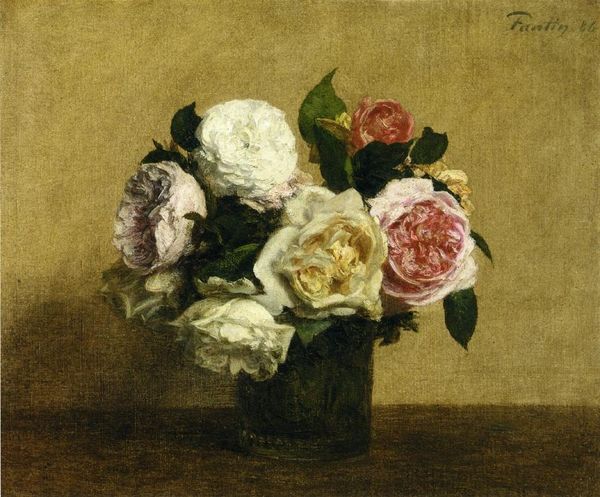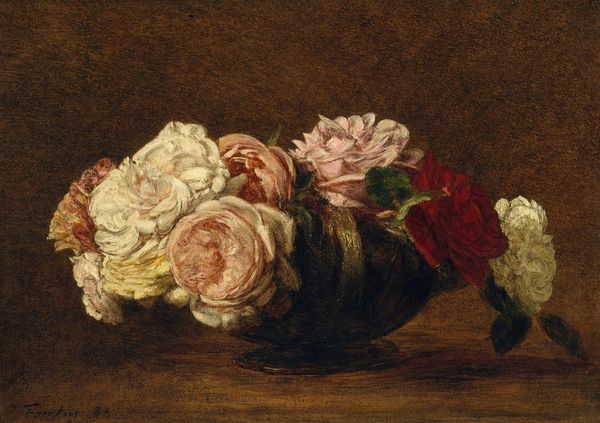
Copyright: Public domain
Curator: Fantin-Latour's "Yellow Pink Roses in a Glass Vase," painted in 1903, captures the delicate beauty of these blooms with a characteristic impressionistic style, a beautiful piece crafted in oil paint. Editor: The first impression is almost one of hushed stillness. It’s a very quiet arrangement, somber even with those creamy, almost fading roses set against that brown backdrop. It makes you think about temporality, decay... Curator: Precisely. Consider the Victorian era’s fascination with the language of flowers, where specific blooms conveyed hidden meanings. Roses, generally symbols of love and beauty, take on new layers. The choice to depict them at what appears to be the peak of their bloom also touches upon fleeting beauty, the ephemeral nature of life. Editor: Yes, that tension between beauty and transience is really amplified here. Also, roses, since antiquity, have carried so much weight, representing secrecy, perfection, and sometimes even death. Does Fantin-Latour play on this complex visual lexicon, almost hinting at a Vanitas tradition? Curator: Absolutely, particularly when viewed through the lens of his personal life at the time. We understand now, reflecting on the circumstances, that his wife had passed away some time earlier that year. So the visual language carries a deeply emotional weight related to grief, beauty fading with passing time. Editor: And notice the subtle blurring of the edges, which is typical for the Impressionist style. He blurs those outlines, giving a sense of movement but it almost amplifies that dream-like quality and emphasizes the idea of the present moment slipping away from us. Curator: We can analyze his choices not just technically but also conceptually. The artist creates this painting after this deep personal loss, thus it gains an autobiographical importance. The choice of roses in their peak bloom encapsulates the poignant tension between memory, beauty, and inevitable loss. Editor: It’s interesting how something as seemingly simple as a floral arrangement can speak volumes about loss, remembrance, and the enduring power of symbols across time and cultures. Curator: This close inspection really underlines how the artwork operates on multiple levels, offering something new each time we return to it. Editor: Yes, there is always something deeper to discover.
Comments
No comments
Be the first to comment and join the conversation on the ultimate creative platform.

